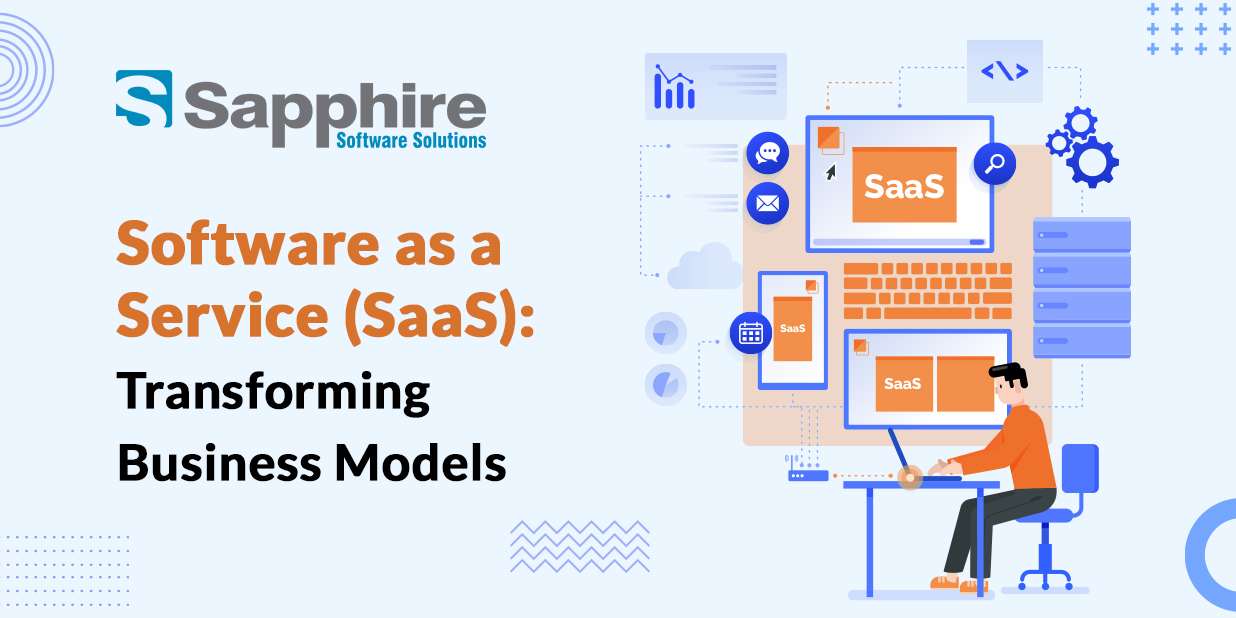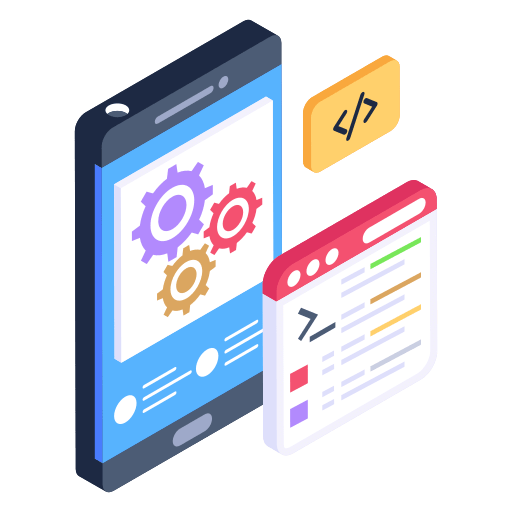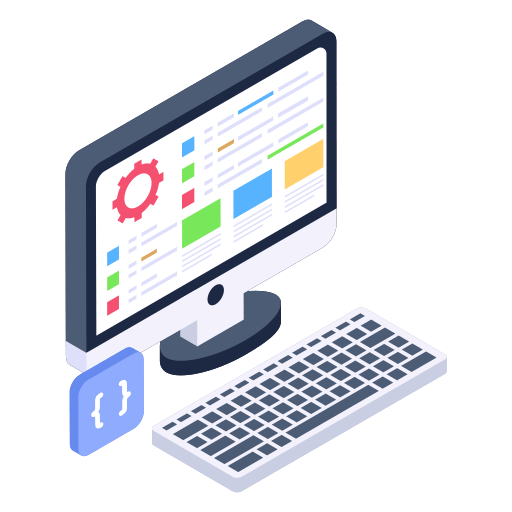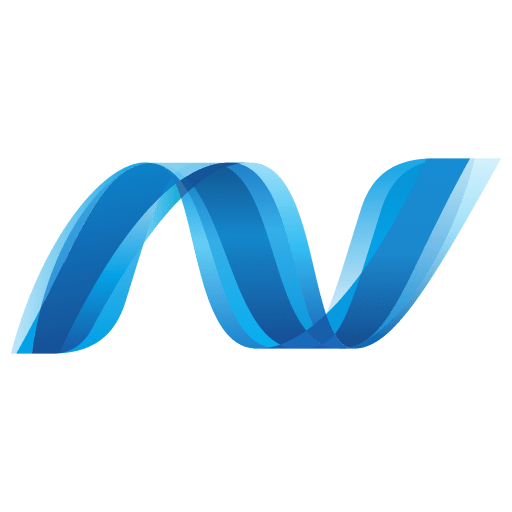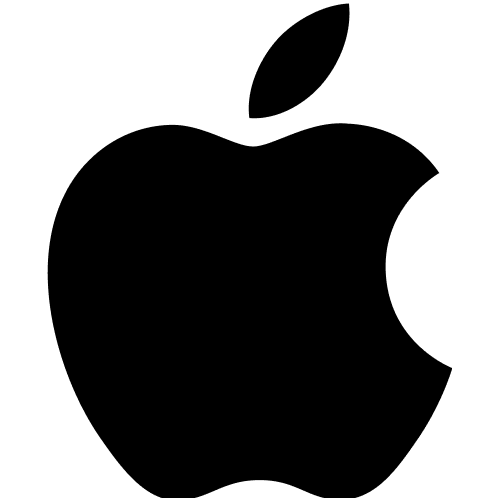What is Software as a Service (SaaS)?
You require powerful business applications, but you’re fed up with perpetual installations, updates, and IT congestion. That’s where Software as a Service saves the day. SaaS provides all you require in your browser – no downloads or maintenance horrors. Unlike the old software with initial license fees, SaaS has a subscription model like Netflix for enterprise applications. This lowers the cost of entry and makes scaling easy. It is no surprise that businesses from small startups to huge corporations have fallen in love with software as a service products over the last ten years.
Evolution of Software as a Service: From Tech Curiosity to Business Necessity
It’s difficult to imagine cloud software was once seen as risky and strange. During the late ’90s, with dial-up connections and sluggish downloads, having critical systems on the internet seemed ridiculous. Serious businesses purchased pricey software packages, loaded them onto their servers, and hired staff just to make everything function.
Times have shifted profoundly. Installation discs and update cycles are as much a relic of the past as payphones are in 2025. Nowadays, all major business processes are conducted through software as a service platforms and cloud-native apps accessed from anywhere.
What catalyzed this change? A perfect storm:
- Substantially increased internet speeds
- Increasing confidence in cloud security
- Need for remote access to tools
- Cost benefits of subscription models to both providers and users
Top 5 Real-World Software as a Service Examples That You Should Know:-
The greatest way to learn SaaS is through apps that changed the way we work:
- Salesforce: Led the way in cloud-based CRM, allowing sales teams to move fast and respond fast.
- Google Workspace: Moved email, docs, and spreadsheets to the cloud, changing office work.
- Zoom: Attained overnight popularity during the pandemic, linking remote teams when needed most.
- Dropbox: Replaced “I’ll email it to you” with easy cloud storage that solved a daily hassle.
- Shopify: Empowers millions of online shops, making it possible for anyone to build an e-commerce platform without writing code.

Beyond the Big Names: Niche Players Changing the Game:-
Everyone is familiar with the biggest players, but specialized software as a service platforms are disrupting markets, often having a better grasp of certain challenges than broad ones-do-everything giants.
In healthcare, Athenahealth has revolutionized medical practice management with cloud platforms that manage everything from patient files to insurance claims while wading through challenging regulations.
Law firm practices derive advantages from targeted solutions such as Clio, designed specifically for legal processes. Even mature industries such as construction leverage specialized software such as Procore to handle projects from blueprints to schedules.
Specialist platforms can’t do everything, but they do an exceptional job at solving unique industry requirements, even beyond standard solutions in most cases.
Is Software as a Service Cloud Right for Your Business?
For most businesses in 2025, SaaS makes perfect sense, especially if scalability, cost-effectiveness, and flexibility matter to you. Traditional software means installation headaches, manual updates, and dedicated IT support. With SaaS, that’s all handled behind the scenes. This is especially great for small businesses and startups. Instead of shelling out big bucks for infrastructure and IT staff, you have enterprise-grade tools for a basic monthly fee. As your business expands, your software as a service solution can expand with you – no more constantly replacing systems.
Even with its benefits, SaaS isn’t appropriate for every scenario. Here’s when old-school software may still be the better choice:
When Your Legacy Systems Actually Work Great:
If your business operates on bespoke software that has been honed over decades, a shiny new SaaS equivalent may be a backward step. One factory ditched their bespoke production management software for a newer SaaS system, only to switch back within three months after losing a million dollars.
When Regulations Tie Your Hands:
Some industries face regulatory challenges that complicate cloud deployment. Financial institutions may need to keep data within specific geographical boundaries, and government agencies handling classified information often cannot use cloud systems regardless of security claims.
When Your Internet Connection Sucks:
Despite technological progress, reliable internet isn’t universal. For businesses in remote locations with connectivity issues, cloud-based solutions can mean frequent operational disruptions.
When Control Is Non-Negotiable:
For certain businesses, complete control of their software environment is a strategic imperative. With SaaS, you’re at the mercy of your vendor’s roadmap, pricing strategy, and long-term existence.
Exploring Software as a Service Applications for Remote Work:-
Remote work is used to equal isolation from company infrastructure. Not anymore. The remote work revolution today is fueled by SaaS applications delivering the same functionality regardless of whether you’re in the office or on your couch.
Project Management Tools such as Trello and Asana have become a substitute for whiteboards. Teams follow tasks, timelines, and status in shared spaces that get updated in real-time. Communication Channels such as Slack and Microsoft Teams have made distance irrelevant when it comes to communication in workplaces.
Time Tracking & Productivity software such as Toggl and Clockify assist managers in tracking team performance irrespective of physical location. Deploying new technology isn’t about features – it’s about humans. Most companies learned that during the sudden shift to remote work.
Successful SaaS deployment involves careful change management. Successful companies don’t simply launch new tools; they offer proper training, communicate the reason for change, and allow employees time to adjust. Just as critical is choosing intuitive tools that don’t need a lot of training. Each minute employees waste wrestling with complex software is time not working on their real job.
Understanding the Software as a Service Model: How It Works Behind the Scenes
Legacy software is the equivalent of owning a car – it’s yours, takes up space, and needs to be serviced. SaaS is like ride-sharing – on-demand when you want it, someone else takes care of the maintenance, and shares with others (though you’d never know it).
SaaS applications mostly rely on software as a service architecture, which often features multi-tenant models. This means different customers share a common underlying system but have all data kept entirely separate – comparable to an apartment complex with common foundation and utilities but individual living quarters.
This collective strategy results in staggering efficiency, enabling providers to invest in performance, security, and reliability to an extent individual organizations could not possibly match.
Today’s SaaS generally uses:
- Containerization: Bundling programs with everything they require to operate
- Microservices: Decomposing big applications into separately updatable parts
- Dynamic Scaling: Scaling computing capacity on demand
- Continuous Deployment: Deploying enhancements without affecting users
The SaaS business case is strong:
- Cost Savings: No servers, licenses, or entire IT department to support
- Location Independence: Use tools from anywhere with internet access
- Elasticity: Easily scale as your business grows
- No Update Hassles: No manual update processes
- Improved Security: Enterprise-level security most businesses couldn’t afford
- Integration Ease: Most SaaS tools integrate easily with other software
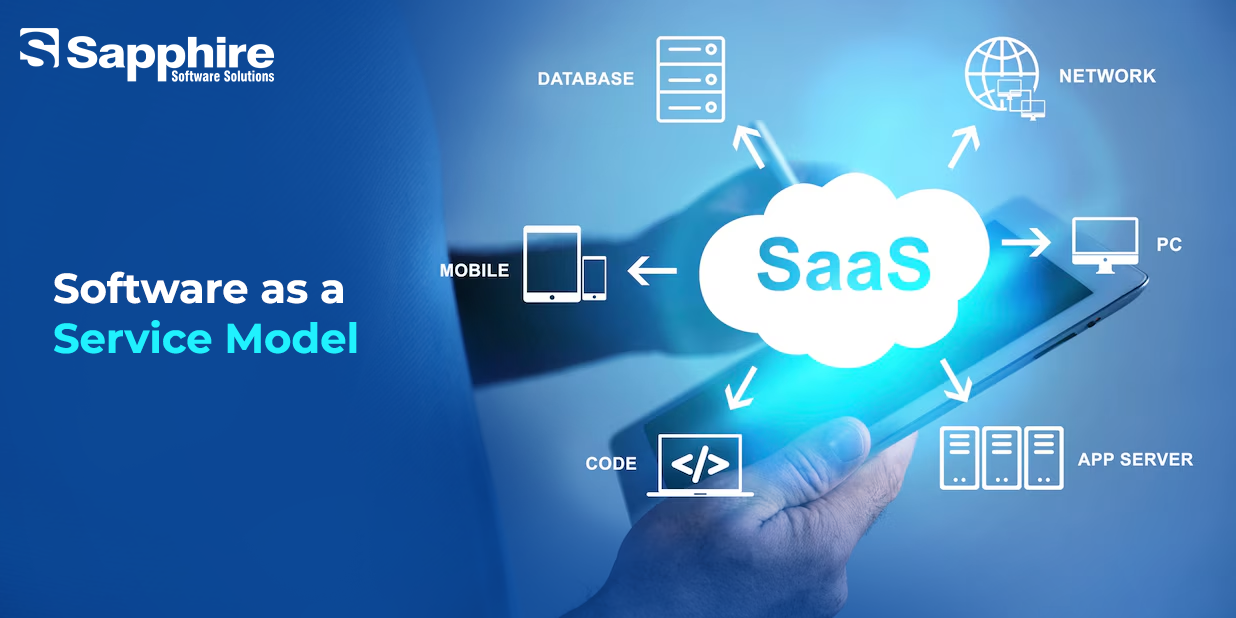
What is the Main Software as a Service Benefits?
SaaS basically flips the conventional software model on its head. Rather than owning software, you’re basically leasing it – part of a larger trend away from ownership and toward service models across the economy.
The SaaS model has major benefits:
- Always Up-to-Date: Automatic updates without any IT intervention
- Scalable: Simple to scale as your requirements expand
- Location-Agnostic: Work from anywhere you have an internet connection
Under the hood, SaaS vendors create high-capacity infrastructure with security, redundancy, and uptime that no individual business could ever hope to afford on its own.
For prospective SaaS business owners, several promising opportunities await:
- More Advanced Remote Collaboration: Even with tools available, teams are still challenged by elements of remote collaboration. Platforms solving subtle collaboration problems might be game-changers.
- Customized E-learning: The education revolution has only just started. Platforms supporting tailored learning experiences are getting serious attention.
- Full-featured Wellness Tech: The wellness industry is shifting away from simple fitness tracking towards more holistic physical and mental wellness solutions.
- Small Business Inventory: Current inventory solutions are too costly and complicated for small retailers. Easy, low-cost solutions could plug a significant gap.
- Industry-Specific CRMs: Generic CRMs don’t solve industry-specific workflows. Real estate agents, healthcare professionals, and lawyers all look for CRMs that meet their particular needs.
Software as a Service Success Stories: Real-World Implementation Results
A practice I worked with transitioned to cloud software late in 2023. In 18 months, they saved nearly 50% on IT costs, onboarded clients 67% more quickly, and enhanced client satisfaction by 22%.
The managing partner said, “I knew we’d save money, but I didn’t realize how it would change our client relationships. We spend so much less time fighting with technology and so much more time actually serving clients.”
A digital commerce company bypassed spending more than a million dollars on infrastructure by constructing fully on software as a service platforms. Their CTO observed, “If we’d have done it the old way, we’d have had to do another funding round just for tech. Instead, we scaled from 50,000 to 500,000 customers smoothly.”
Software as a Service Business Ideas You Can Start in 2025:-
The software as a service industry continues evolving rapidly:
Industry-Specific Solutions Gaining Ground:
While general-purpose SaaS reigned supreme at first, industry-specific solutions are expanding rapidly, providing customized workflows and compliance functionality for healthcare, finance, manufacturing, and other industries.
Practical AI Applications:
AI is breaking out of hype to provide concrete value in SaaS, with smart algorithms tailoring experiences, anticipating needs, and automating mundane tasks.
Emergence of Citizen Developers:
Low-code and no-code solutions are erasing the distinction between users and developers, enabling business users to create personalized workflows and applications without traditional programming expertise.
Edge Computing Support:
With IoT devices on the rise and bandwidth requests spiking, data processing near its origin instead of in far-off cloud hubs is becoming unavoidable. Visionary SaaS providers are architecting their solutions to take advantage of edge computing for better performance.
Environmental Sustainability:
Environmental concern is emerging as a technological choice factor. Cloud and SaaS vendors are prioritizing energy efficiency and carbon neutrality as sustainability becomes increasingly important for organizational procurement decisions.
From Idea to Launch: Building a SaaS Business That Actually Works
If you’re serious about building a SaaS business, then do the following:
1. Get Obsessed with the Problem:
Before writing any code, have a deep understanding of the problem you’re solving. Have lengthy conversations with potential users, sit with them as they work, and define their pain points.
2. Start Small but Useful:
Create the simplest version that offers tangible value instead of trying to feature everything under the sun. This checks for market demand before significant investment.
3. Set Your Pricing:
SaaS pricing is an art and science that considers:
- Value created
- Competitive environment
- Cost of operation
- Growth goals
Successful SaaS companies often begin with lower prices to establish a base of users before incrementally raising rates.
4. Acquire Your First Customers:
Successful customer acquisition tactics generally involve:
- Developing valuable content proving expertise
- Collaborating with complementary businesses
- Targeted advertising
- Free trials to highlight your value proposition
5. Focus on Customer Success:
In subscription companies, customer acquisition is only the first step – retention equals profitability. Successful SaaS businesses spend a lot on assisting users to get maximum value out of their product.
Finding the Right SaaS Development Company for Your Business in 2025:-
Selecting the right development partner is vital. Consider:
- Established SaaS Experience: Not general software, but cloud-based subscription product experience
- Technical Competence: Familiarity with up-to-date frameworks and scalable cloud architecture
- Knowledge of Your Vision: They must understand your individual aspirations and not try to fit into a template
- Focus on Security: Cloud platforms call for end-to-end security at each level
- Round-the-Clock Support: Great partners keep backing you up after go-live
Keeping Your SaaS Secure: What Really Matters
With more business migrating to SaaS platforms, security gains importance. Shared responsibility models compel providers to harden infrastructure but leave customers with access control in their hands.
When considering SaaS solutions, ask pointed security questions:
- How is data encrypted in transit and at rest?
- What access controls do you have?
- Which compliance certifications do you hold?
- What’s your security incident notification procedure?
- How do you guarantee data segregation between customers?
On your end, exercise good security hygiene:
- Strong, one-of-a-kind passwords (use a password manager)
- Regular access reviews
- Security awareness training
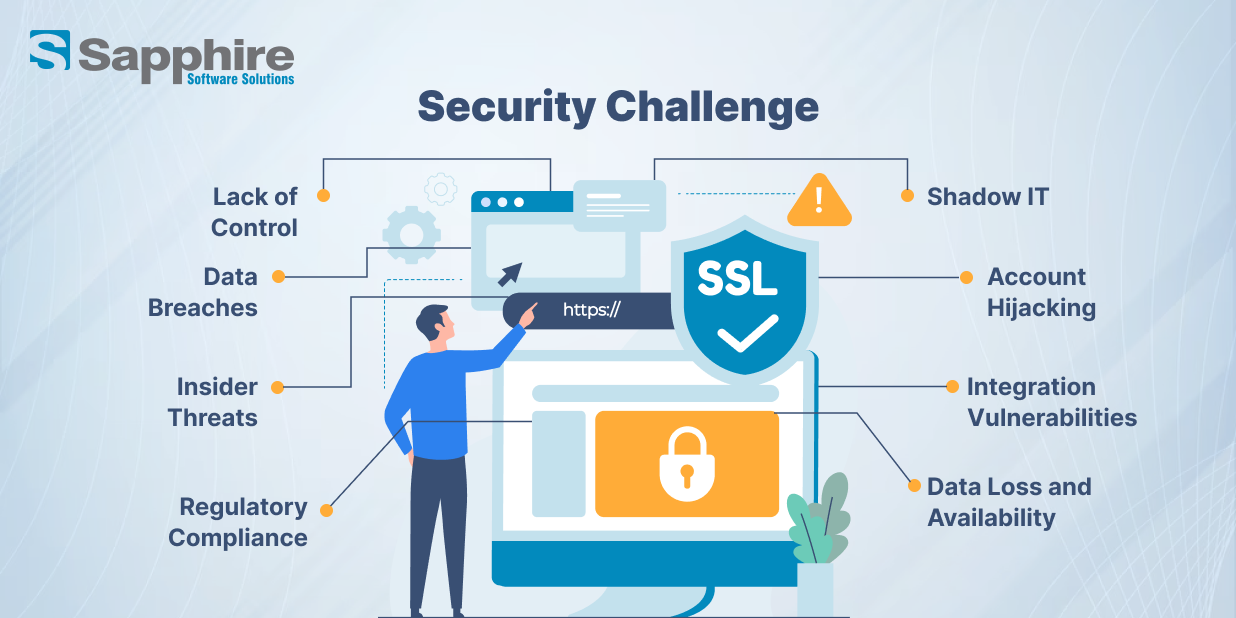
Why Choose Sapphire for Your SaaS Application Development?
Look, finding the right SaaS development partner is tough. We get it. After years in this business, we’ve seen projects succeed wildly and others crash and burn. The difference? Usually comes down to who you partner with. Here at Sapphire Software Solutions, we’re not your typical “yes-men” developers. We’ve been knee-deep in SaaS since before it was cool, and we’re passionate about doing it right.
What makes us different? For starters, we actually understand the SaaS business model, not just the coding part. When you’re worried about scaling or multi-tenant architecture, we won’t give you blank stares – this stuff is our bread and butter.
Our team tackles problems from both sides – making things work beautifully for end users while ensuring the technical foundation is rock-solid. That’s because we’ve built our company with both types of talent, not just backend developers who think UI is an afterthought.
But honestly? Our real difference is how we work with clients. We’ve tossed out the old “build it and disappear” model. Your project’s success is literally our success, so we’re invested all the way through. That means straight talk when plans need adjusting and genuine collaboration, not just nodding and billing hours.
Security isn’t something we bolt on at the end either. With data breaches making headlines every week, we’re kind of obsessive about building protection into everything from day one. And launch day? That’s just the beginning of our relationship. Some of our best client partnerships are going strong years after the initial build because SaaS is a journey, not a destination. Whether you’re shaking up healthcare, finance, education or another industry, chances are we’ve been there. Not just coding – but actually understanding the weird regulations and specific challenges you’re facing.
From Startup to Enterprise — SaaS Powers Every Stage
Wrapping Up:
SaaS has radically altered the way that businesses work, interact, and add value. With industry lines blurring and digital transformation in full swing, cloud-based solutions will continue to lead business innovation.
Whether you’re streamlining operations, facilitating remote work, or starting your own business, the SaaS ecosystem presents unparalleled opportunities. Comprehending the model and its advantages allows you to make smarter technology choices within this fast-changing environment.



















